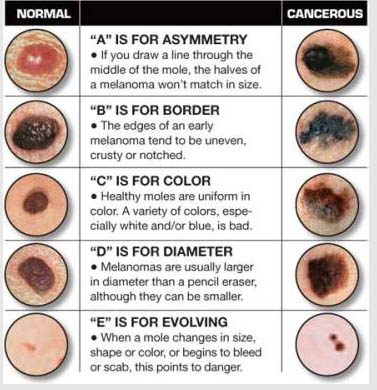Diagnosing, Preventing and Treating Skin Cancer
Approximately 1 in 5 Americans will develop skin cancer in their lifetime. The principal risk for skin cancer is lifelong over exposure to the sun. Regular skin examination by Dr. Teresa Mann and the Pure Dermatology team allows recognition of skin cancers when they are small and easily cured by a minor surgical excision.
Actinic Keratosis (AKs)
The most common precursor of skin cancer is the Actinic Keratosis. These premalignant lesions are red, scaly areas on the face, hands, and arms as a result of sun damage early in life. They are easily treated with liquid nitrogen (freezing) or with topical chemotherapy creams. Occasionally patients may have too many AKs for adequate control with freezing. The next level of therapy includes topical treatment with 5-fluorouracil, imiquimod, or “blue Light” therapy. The regular treatment of AKs reduces one’s lifetime risk for developing basal cell and squamous cell skin cancer.
Basal Cell Carcinoma (BCCs)
The most common skin malignancy is Basal Cell Carcinoma. One million new cases are diagnosed annually. These tumors often have a pearly opalescent appearance with overlying dilated blood vessels while others are crusted, non-healing “sores”. Rarely BCCs can present as a subtle ivory-colored or a scar0like area which expands by destroying the normal pores on the surface of the skin. These slow growing tumors do not metastasize, i.e. spread to internal organs, but they can cause major tissue destruction. BCCs ae most often found on the face, scalp, back, and chest. In most patients these cancers can be cured with a simple surgical excision or a local destruction technique known as curettage and electrodessication. Occasionally patients require referral for Mohs surgery for very large tumors, tumors showing infiltrative and aggressive histology, recurrent tumors, or large tumors in sensitive anatomic areas such as the nose.
Squamous Cell Carcinoma (SCCs)
Squamous Cell Carcinoma affects 200,000 American’s annually. SCCs usually exhibit a thick surface scale although they can be ulcerated or even present with a “volcano-like” appearance. These tumors can show rapid growth, occasionally metastasize, and very rarely can be fatal. SCCs are most commonly seen on the face (especially lips and ears), scalp, hands, and arms. If diagnosed early a simple surgical excision is usually curative. SCCs can be very aggressive in organ transplant patients and others who take immunosuppressive medication.
Malignant Melanoma (MM)
Although the worldwide incidence of melanoma is increasing, MM remains one of the rarest skin malignancies. 50,000 cases per year are diagnosed in the United States. Melanomas are recognizable as “ugly ducklings” (moles which look different or stand out). They usually have no symptoms and present as brown or black (or rarely reddish) FLAT lesions which have the “ABCDEs”.
The ABCDE’s of Melanoma
Skin cancer can develop anywhere on the skin. Ask someone for help when checking your skin, especially in hard to see places. If you notice a mole that is different from others, or that changes, itches or bleeds (even if it is small), you should see a dermatologist.
A: Asymmetry – the two halves of the lesion are not mirror images.
B: Border Irregularity – The edges are blurred, jagged or notched.
C: Color Variation – The pigment is not uniform. The lesion has shades of tan, brown, or black. Red, white or blue colors are especially worrisome.
D: Diameter – Lesions are bigger than a pencil eraser or 6 mm.
E: Evolution or Change – Lesions show centrifugal growth.

Almost all melanomas are curable with a simple surgical excision if detected early, but thick, chronic lesions can fatally metastasize from the skin to internal organs. Sentinel node biopsy is appropriate for melanomas equal to or greater than 1 mm in thickness. Radiation therapy is not effective in treating melanoma and chemotherapy is appropriate only for metastic tumors.
Very rarely a gene increases the risk of melanoma in family members, but the main genetic risk for melanoma is fair skin and blue eyes. We recommend regular dermatology exams for patients over age 40 with the highest risk for developing a melanoma, such as blue-eyed redheads with freckles who burn easily and have little ability to tan. A monthly self-examination of all skin surfaces is also recommended for patients at high risk.
Self Examination

Courtesy of AAD.org

